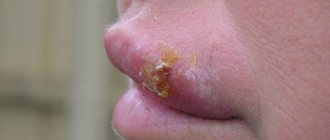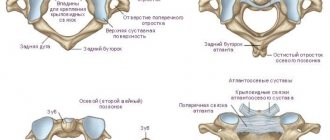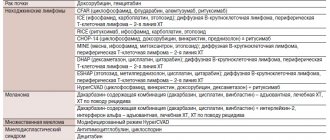To the reference book Sphenoiditis is an inflammation of the mucous membrane of the sphenoid sinus. Treatment is conservative and surgical.
Author:
- Oganesyan Tigran Sergeevich
ENT pathology expert
5.00 (Votes: 1)
- Sphenoiditis
- Treatment
Sphenoiditis is an inflammatory disease that develops in the mucous membrane of the sphenoid sinus. Pathology can occur in acute or chronic form. Often occurs against the background of ethmoiditis, less often accompanied by frontal sinusitis and sinusitis.
Wedge in the nose
According to medical definitions, sphenoiditis has several names. “In general, when they talk about sphenoiditis, they mean the sphenoid sinus. There are several concepts in medicine of the same anatomical formation - main sinus, sphenoidal sinus, sphenoid sinus. It is called the main one because it is actually located at the base of the skull, as deep as possible in the center. Wedge-shaped - because it has a characteristic shape. If in Latin, then we are talking about the sphenoidal sinus. But all this is essentially the same thing,” says Vladimir Zaitsev.
Article on the topic Drops or spray? What's better for a runny nose?
As the ENT doctor notes, sphenoiditis in terms of frequency of manifestations is the rarest variant among sinusitis. According to statistics, it occurs in 3-5% of cases. At the same time, it is necessary to understand that it cannot be underestimated, since its consequences are extremely negative. “Such inflammation begins in a standard way: first, inflammation of the nasal cavity occurs when an infection occurs, usually presenting as a picture of acute rhinitis, then the infection and inflammation go not to the maxillary sinus, but to the sphenoidal sinus. As a rule, this occurs if the anastomosis connecting the sinus and nasal cavity is open. As a result, the infection gets there and leads to the development of inflammation,” explains the otolaryngologist.
A similar situation can develop when a person rinses his nose incorrectly. For example, if he puts too much pressure on the bottle, pressure builds up and everything ends up in the wrong place. “Or there may be a condition when a person simply decided to rinse his nose preventively, that is, there is nothing to rinse, but he still wants to wash it. Here it is important to understand that the anastomosis is in the state of a valve, when it can pass the solution through itself, it passes into the sinuses, but the solution cannot come back out,” says Zaitsev.
The situation is worsened when the sinus is severely inflamed and the person presses too hard on the bottle dispenser. The anastomosis does not work well here; the solution remains behind the anastomosis and causes severe inflammation.
When everything is in our hands. What diseases can a runny nose be a symptom of? More details
2. Reasons
The etiopathogenesis of all variants of sinusitis is approximately the same. With infectious rhinitis, swelling and inflammation of the mucous membranes of the nasopharynx (or the direct introduction of pathogenic microorganisms into the sinus itself), the lumens of the anastomosis that perform ventilation and drainage functions are reduced. Difficulties in the outflow of secretions and insufficient air flow create favorable conditions for rapid activation of the pathogen and, accordingly, intensification of inflammation, as a result of which the swelling worsens; a kind of vicious circle arises, which can lead to complete blockage of the sinus. In some cases, pathogenic microflora can penetrate into the paranasal sinuses not through the respiratory, but through the lymphogenous or hematogenous route.
Thus, the main causes of sphenoiditis can be considered the following:
- frequent acute respiratory viral infections, acute nasopharyngitis and tonsillitis of non-viral etiology, as well as allergic reactions;
- chronic foci of infection in the immediate vicinity of the sphenoid bone, incl. chronic tonsillitis, caries, periodontitis, periodontitis, gingivitis, pharyngotracheitis, etc. - this is especially true for ethmoiditis, inflammation of the sinus of the ethmoidal labyrinth;
- congenital and acquired anomalies of anatomical structure, incl. adenoids, polyps, deviated nasal septum, narrow passages, benign and malignant tumors, traumatic deformities and many others;
- any conditions that contribute to the weakening of general and/or local immunity (hypothermia, smoking, occupational hazards, environmental factors, HIV/AIDS, hypovitaminosis, diabetes mellitus and other severe chronic diseases, endocrine disorders, etc.);
- specific infections leading to destructive changes in the sphenoid bone (syphilis, tuberculosis, etc.).
It should be noted that in the vast majority of cases, all kinds of viruses act as the causative agent of primary acute rhinosinusitis, while in the pathogenesis of secondary, mixed, chronic forms of sphenoiditis, the leading role belongs to streptococci, staphylococci and other pathogenic bacteria, less often - fungal cultures and, finally, very rarely - the simplest.
Visit our Otolaryngology (ENT) page
Symptoms of sphenoiditis
It is important to understand exactly what sensations a person will experience with sphenoiditis. After all, nasal pathologies are often recognized by the pain in the facial area that a person feels. “With sphenoiditis, pain will not develop in the forehead, the person will not have pain in the bridge of his nose, he will not feel heaviness and pain in the cheeks, and the back of his head will hurt,” says Vladimir Zaitsev. And this is where the loss of time for timely treatment begins, since many people attribute headaches to overwork, and sometimes to changes in blood pressure.
At the same time, people can even go to a doctor, but to the wrong one: someone goes to a therapist, someone to an ophthalmologist, to check the condition of the fundus and pressure. As a rule, everything is fine here. “In essence, such a patient requires radiation diagnostics - the same X-ray, but better than CT, showing a three-dimensional image. The sinus scan option is no longer suitable here, since the sphenoidal sinus cannot be seen using sinus ultrasound,” says Zaitsev. In this case, the choice of method - X-ray or CT - should be made by a doctor, based on symptoms, complaints and other data.
If sphenoiditis with exudate, the doctor will see pus flowing down the back wall of the pharynx. He can also use endoscopy, with the help of which he will determine the presence of a problem - the device will allow him to see whether mucopurulent contents are flowing from the anastomosis, then the diagnosis will be clear. A CT scan can be used as an adjunct to determine if there is pus inside.
In general, the picture of sphenoiditis is determined by a set of signs. “If a person feels that his sense of smell has decreased, that there is nasal congestion, and something is running down his throat, if there is pain in the back of the head - monotonous, pressing, constant, worsening over time, when only painkillers can help, and at the end effect of the drug, the pain returns, sphenoiditis should be suspected,” notes the otorhinolaryngologist.
A threat to the brain. How to protect yourself from meningitis? More details
Diagnostics
Due to the deep location of the sphenoid sinus, the disease is difficult to diagnose in time. Its proximity to the trigeminal, optic and other nerves creates a danger for the development of neurological disorders, which in some cases are a clear and only marker of ENT pathology. When making a diagnosis, along with the patient’s complaints, data from endoscopy, computed tomography and magnetic resonance imaging are taken into account. For diagnostic purposes, puncture of the affected sinus can also be performed.
How to treat
If there is purulent discharge, antibiotics are 100% required, which must only be prescribed by a doctor. “As a rule, it is better to treat sphenoiditis in a hospital setting. But this may be at the discretion of the doctor. If a specialist has enough experience and the necessary equipment, then he can observe the patient on an outpatient basis, however, the person will have to go to the doctor every day,” says Vladimir Zaitsev.
Article on the topic
Encephalitis, meningitis, loss of vision. The most dangerous complications of measles
4.Treatment
Therapy for sphenoiditis, in fact, should begin with the maximum possible elimination of all anatomical (deformation, hyperplasia, etc.), infectious and environmental factors that create the ground for the progression or recurrence of sphenoiditis. The most important task is to restore ventilation and drainage of the sphenoid sinuses. For this purpose, vasoconstrictor drugs are prescribed, and antibiotic, antiviral, and antimycotic regimens are used as etiotropic therapy (depending on the examination results).
As necessary, resort to symptomatic drugs: NSAIDs, analgesics, vitamins, probiotics, antipyretics.
In cases where conservative intervention is ineffective or the clinical situation quickly worsens, surgical intervention is performed; If there is a choice and opportunity, they prefer minimally invasive endoscopic surgery.
Complications
Sphenoiditis, the otorhinolaryngologist notes, is fraught with its own complications. “First of all, it is rhinogenic meningitis. The brain is nearby, pus can easily get to it. In second place is frontal sinusitis, then ethmoiditis and, as a possible complication, sinusitis. True, it is worth understanding that intracranial complications also do not occur so often, because for this it is necessary that there is a lot of pus,” says Vladimir Zaitsev. But if suddenly the situation reaches the point of meningitis, then resuscitation and even death are possible.
It is important to prevent the disease from becoming chronic. “If sphenoiditis becomes chronic, then the person will no longer have a normal life, its quality will be so poor that it will be difficult for him to live a full and healthy life. After all, any hypothermia will immediately lead to the development of all these symptoms and risks,” says Vladimir Zaitsev. This means that we must devote all our efforts to a cure; if such a diagnosis is made, the problem must be eradicated completely and immediately, while it is in an acute period.
There are contraindications, you should consult your doctor
Forecast
With timely medical or surgical treatment, the patient suffering from sphenoiditis recovers. Relapses are rare.
I hope that this publication will help both patients and specialists in the diagnosis and proper treatment of acute or chronic sphenoiditis. If you suffer from a similar disease, you can contact the author. See CONTACTS section
Sincerely, ENT surgeon, Candidate of Medical Sciences, Head of the surgical ENT department of the clinic for diseases of the ear, nose and throat, First Moscow State Medical University named after I.M. Sechenova Petr Aleksandrovich Kochetkov
[email protected] 8-962-957-11-22 8-495-978-65-07
| Use of materials from the website of Dr. Kochetkov P.A. on other Internet resources is allowed if there is an active hyperlink to the site. Any other use of materials without the written consent of the author is prohibited! |
Prevention
The most important thing in preventing sphenoiditis is strengthening the immune system. It is because of weakened immunity that sphenoiditis develops - the body simply cannot fight pathogenic microflora and infections. To strengthen the body's defenses, it is necessary to develop resistance to stress. It is also important to follow a daily routine, eat right, and lead a healthy lifestyle. Hardening will also be beneficial, but it must be carried out strictly according to the rules.
How to make an appointment with the specialists of JSC "Medicine" (clinic of academician Roitberg)
You can make an appointment with the specialists of JSC "Medicine" (clinic of Academician Roitberg) on the website - the interactive form allows you to select a doctor by specialization or search for an employee of any department by name and surname. Each doctor’s schedule contains information about visiting days and hours available for patient visits.
Clinic administrators are ready to accept requests for an appointment or call a doctor at home by calling +7 (495) 775-73-60.
Convenient location on the territory of the central administrative district of Moscow (CAO) - 2nd Tverskoy-Yamskaya lane, building 10 - allows you to quickly reach the clinic from the Mayakovskaya, Novoslobodskaya, Tverskaya, Chekhovskaya and Belorusskaya metro stations .
Diagnosis of sphenoiditis at the Yauza Clinical Hospital
The hospital's otorhinolaryngologists carry out a comprehensive diagnosis of the disease using the following examination methods:
- bacteriological examination of pathological discharge from the nasal cavity and affected sinuses;
- rhinoscopy (at the initial examination);
- radiography;
- computed tomography of the nasal cavity and paranasal sinuses using Philips digital equipment, which increases the accuracy of diagnosis, allows you to obtain layer-by-layer images in different planes, and correctly plan ENT operations;
- endoscopic examination of the nasal cavity and nasopharynx.
Endoscopy allows you to detect the disease at the earliest stage of development without surgical intervention. The technique is applicable for children, since it is absolutely non-traumatic and is performed under local anesthesia. The doctor inserts a thin endoscope tube with a camera through the nose and observes the condition of the nasopharynx in an enlarged image on the monitor.
Methods for diagnosing inflammation of the sphenoid sinus used in hospitals make it possible to determine:
- individual characteristics of the structure of the nasal septum and sinuses;
- condition of the mucous membrane;
- volume and localization of inflammation;
- swelling, nature and volume of pathological discharge in the lumen of the sinus.
Multifaceted diagnostics allows you to accurately establish a diagnosis and develop a conservative or surgical treatment plan with a sustainable therapeutic effect.










